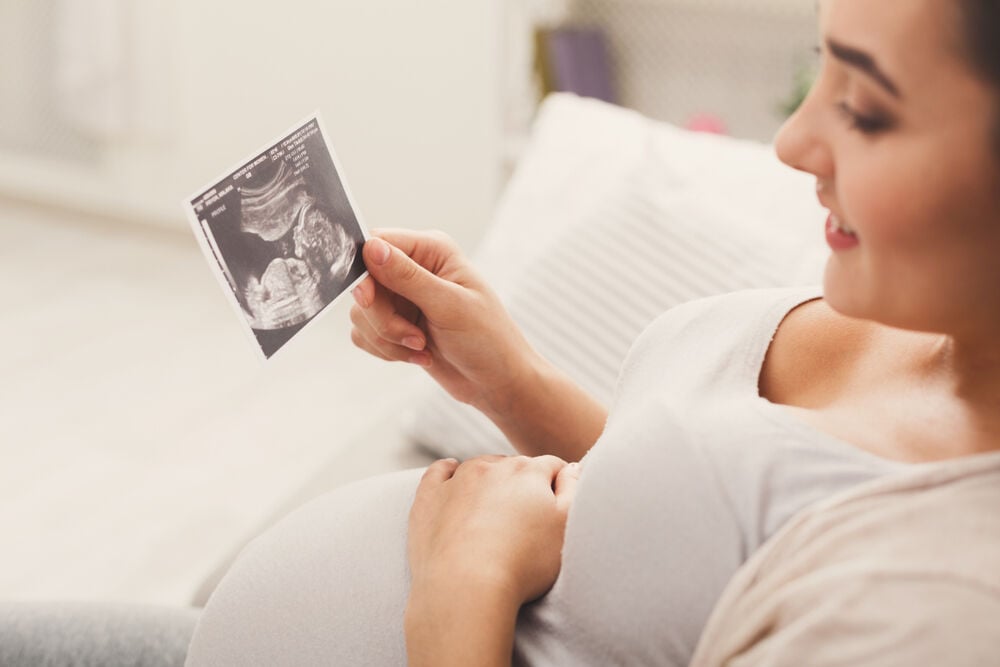When you become pregnant, your body begins to adjust to the fetus and undergoes many changes. One of these changes is the growth of the placenta in your uterus.
-
Tracking cycle
-
Getting pregnant
-
Pregnancy
-
Help Center
-
Flo for Partners
-
Anonymous Mode
-
Flo app reviews
-
Flo Premium New
-
Secret Chats New
-
Symptom Checker New
-
Your cycle
-
Health 360°
-
Getting pregnant
-
Pregnancy
-
Being a mom
-
LGBTQ+
-
Quizzes
-
Ovulation calculator
-
hCG calculator
-
Pregnancy test calculator
-
Menstrual cycle calculator
-
Period calculator
-
Implantation calculator
-
Pregnancy weeks to months calculator
-
Pregnancy due date calculator
-
IVF and FET due date calculator
-
Due date calculator by ultrasound
-
Medical Affairs
-
Science & Research
-
Pass It On Project New
-
Privacy Portal
-
Press Center
-
Flo Accuracy
-
Careers
-
Contact Us
Posterior Placenta Location: Is Posterior Positioning Good for the Baby?


Every piece of content at Flo Health adheres to the highest editorial standards for language, style, and medical accuracy. To learn what we do to deliver the best health and lifestyle insights to you, check out our content review principles.
The placenta is a temporary organ that attaches itself to the uterus and to the fetus’s umbilical cord. It’s through the placenta that the growing fetus is able to get oxygen and nutrients.
The positioning of the placenta is very important and determines whether you will be able to give birth vaginally or if a cesarean section will be safer.
Placental development stages
By attaching itself to the fetus’s umbilical cord, the placenta provides the fetus with nourishment and oxygen while also eliminating the fetus’s waste.
How does the placenta develop?
The placenta begins to grow when the blastocyst implants itself into your uterus. The blastocyst is the bunch of cells, referred to as the inner cell mass, that develops into the embryo. The outer cluster of cells, known as the trophoblast, forms the placenta.
The trophoblast grows quickly, and its cells split into two layers: cytotrophoblasts, which are the inner cells, and syncytiotrophoblasts, which are the outer cells.
The inner cells of the placenta reshape blood vessels in your uterus. This is how the placenta receives blood to provide the fetus with nutrients.
The placenta develops wherever the fertilized egg embeds itself in your uterus:
- Anterior position — on the front wall of your uterus, closest to the belly
- Posterior position — on the back wall of your uterus, closest to the spine
- Fundal position — on the top wall of your uterus
- Lateral position — on the right or left side of your uterus
These are all normal places for the placenta to implant and grow.
When the placenta attaches itself to the back of the uterus, it is called a posterior placenta. When it attaches itself to the front of the uterus, it is known as an anterior placenta.
The placenta undergoes numerous changes from conception to birth. As the fetus grows, the placenta grows to accommodate their development. By the time you give birth, the placenta may weigh as much as a pound (500 grams) and measure 9 inches in length. After the baby is born, your uterus will also contract to expel the placenta.
Take a quiz
Find out what you can do with our Health Assistant
What is it?
The term posterior placenta describes the placenta’s attachment to the back wall of the uterus.
If your health care provider determines that you have a posterior placenta, there’s no need to worry. It’s completely normal. The upper (or fundal) portion of the uterine back wall is one of the best locations for the fetus to be in. It allows them to move into the anterior position just before birth.
Furthermore, a posterior placenta does not affect or interfere with the growth and development of the fetus.

How does placenta positioning affect delivery?
During pregnancy, the placenta location can change. This is why your health care provider may perform an ultrasound scan in the second trimester of pregnancy (roughly 18 to 21 weeks). Another scan may be necessary in the third trimester to double-check placenta positioning before delivery.
One placental location that might be problematic is when the placenta grows toward the cervix. This is called placenta previa. In this position, the placenta could detach from the uterine wall and cause premature labor or internal bleeding.
Another condition, known as placenta accreta, happens when parts of the placenta attach too deeply into the uterine wall. Instead of completely detaching itself after delivery, some or all of the placenta remains in the uterus, sometimes resulting in bleeding.
In such cases, your health care provider may recommend a caesarian section and a post-delivery hysterectomy.
In some rare instances, the placenta remains in the uterus after the baby has been delivered. This is called a retained placenta, and when left untreated, it can lead to complications including infections and heavy vaginal bleeding.
Anterior vs. posterior placenta
To recap, a posterior placenta is one that attaches itself to the back of the uterus, while an anterior placenta attaches itself to the front. Both placental positions are considered normal. Aside from being an ideal location for delivery, the other benefit of a posterior placenta is being able to feel your baby’s movements early on.
This is not the case with an anterior placenta because the placenta may create more space between the baby and your abdomen. Neither posterior or anterior placental location will affect the development or growth of a strong and healthy baby.


Hey, I'm Anique
I started using Flo app to track my period and ovulation because we wanted to have a baby.


The Flo app helped me learn about my body and spot ovulation signs during our conception journey.


I vividly
remember the day
that we switched
Flo into
Pregnancy Mode — it was
such a special
moment.
Real stories, real results
Learn how the Flo app became an amazing cheerleader for us on our conception journey.
References
Zia, Shumaila. “Placental Location and Pregnancy Outcome.” Journal of the Turkish German Gynecological Association, AVES, 1 Dec. 2013,
www.ncbi.nlm.nih.gov/pmc/articles/PMC3935544/.
Mayo Clinic Staff. “Know the Role the Placenta Plays in Pregnancy.” Mayo Clinic, Mayo Foundation for Medical Education and Research, 25 Mar. 2020,
www.mayoclinic.org/healthy-lifestyle/pregnancy-week-by-week/in-depth/placenta/art-20044425.
Wang, Yuping. “Cell Types of the Placenta.” Vascular Biology of the Placenta., U.S. National Library of Medicine, 1 Jan. 1970,
www.ncbi.nlm.nih.gov/books/NBK53245/.
Weeks, Andrew. “Retained Placenta after Vaginal Birth.” UpToDate, 7 Apr. 2020,
www.uptodate.com/contents/retained-placenta-after-vaginal-birth.




